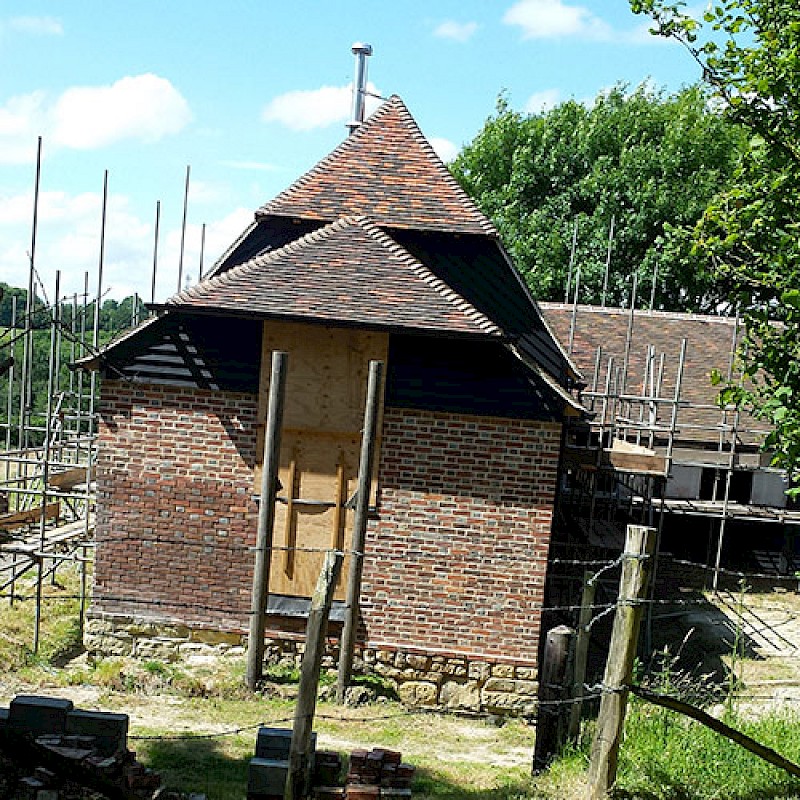Choose SWM Roofing for Your Kent Peg Tile Roof
Our skilled craftsmen understand the intricate nuances of Kent Peg Tiles. Trust SWM Roofing to safeguard the historical significance of your Kent Peg Tile roof, and our deep knowledge of this roofing process will ensure your roofing is professional maintained, and expertly delivered.
Distinctive Charm Of Kent Peg Tiles
What sets Kent Peg Tiles apart from modern roofing materials is their unique installation method - they are hung on pegs. This distinctive approach requires precise expertise to achieve the desired traditional look. Ensuring correct tile alignment and spacing is crucial to capture the essence of this roofing style. Knowledge of the proper technique to secure these tiles is essential to guarantee a watertight roof.
Precise Installation: The Key to Traditional Elegance
At SWM Roofing, we specialise in the art of Kent Peg Tile roofing. With our experience and dedication to preserving the authenticity of this roofing style, you can trust us to bring your vision to life while ensuring a functional and aesthetically pleasing result. We possess the tools and expertise to make the precise cuts needed to adapt the tiles to roof features such as chimneys, vents or valleys.
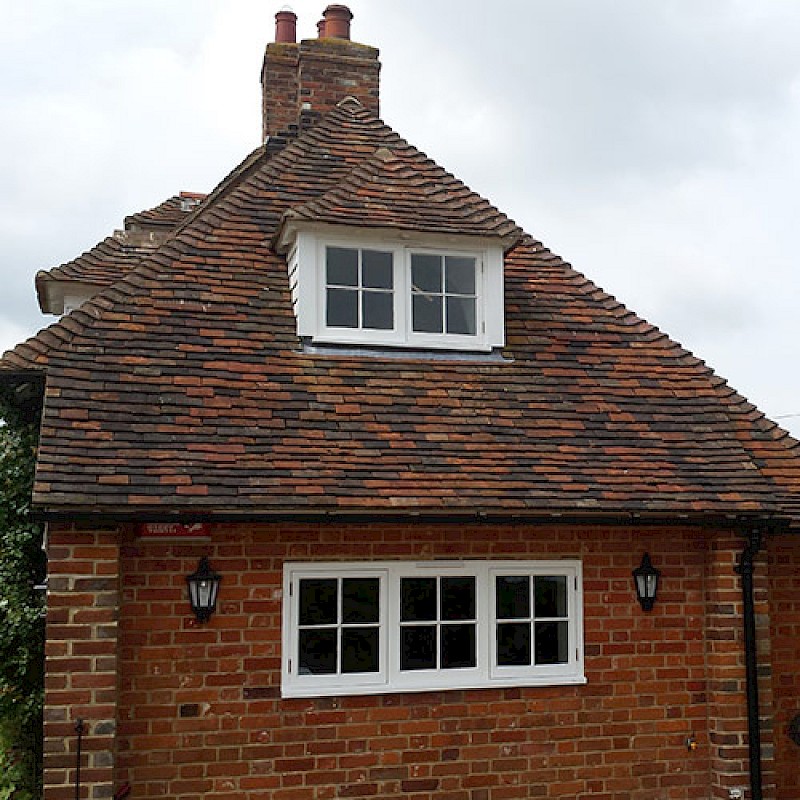
Local Expertise: Kent's Own Roofing Specialists
Our deep understanding of the quirks and nuances of this traditional roofing material, coupled with our location in Kent, positions us as experts in this craft.
Preserving Heritage: Complying with Local Laws
We take pride in ensuring strict compliance with local laws and regulations during the installation process. This adherence is particularly vital when restoring listed buildings and for achieving the stunning appearance synonymous with heritage structures. We have the knowledge of how to fit each tile to ensure they are pleasing to the eye and be watertight, from our experience in fitting these tiles.
Experience The Difference: Choose SWM Roofing
Choose SWM Roofing for your Kent Peg Tile roofing needs and experience the difference of working with experts who understand the intricacies of this time-honoured craft. We use new and reclaimed tiles sourced from reclamation yards, and choose the best tiles when sourcing these. Your roofing project deserves nothing less.
We understand the distinctive charm of these tiles, possess the tools and knowledge to install, are local specialists, and ensure compliance with local regulations.
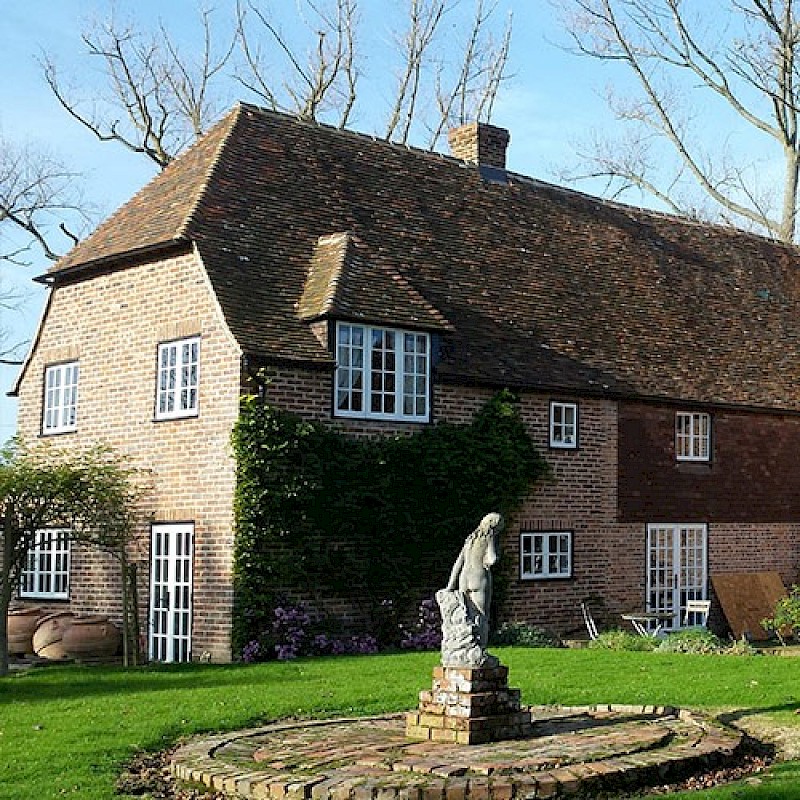
Contact Us Today
To Discuss Your Kent Peg Roofing Requirements
Kent Peg Tiles
Choose SWM Roofing for your Kent Peg Tile Roof.
What is a Kent Peg Tile?
A Kent Peg Tile is a distinctive style of roofing tile primarily used in the English regions of Kent and Sussex. Crafted by hand from locally sourced clay and brick earth, each tile possesses a subtle individuality, contributing to the distinctive charm and architecture of Kentish homes.
The name 'Kent Peg Tile' originates from the process in which these tiles are installed - hung on wooden pegs rather than being nailed to the roof battens. Interestingly, even in the face of a Royal Character decreeing standardisation and larger sizes for roofing tiles across England, Kent tilemarkers remained loyal to their traditional style of tile craftmanship.
Kent Peg Tiles have a rich history and are cherished for their timeless aesthetic. When it comes to preserving the traditional charm of this roofing style, selecting a specialist roofing company is paramount.
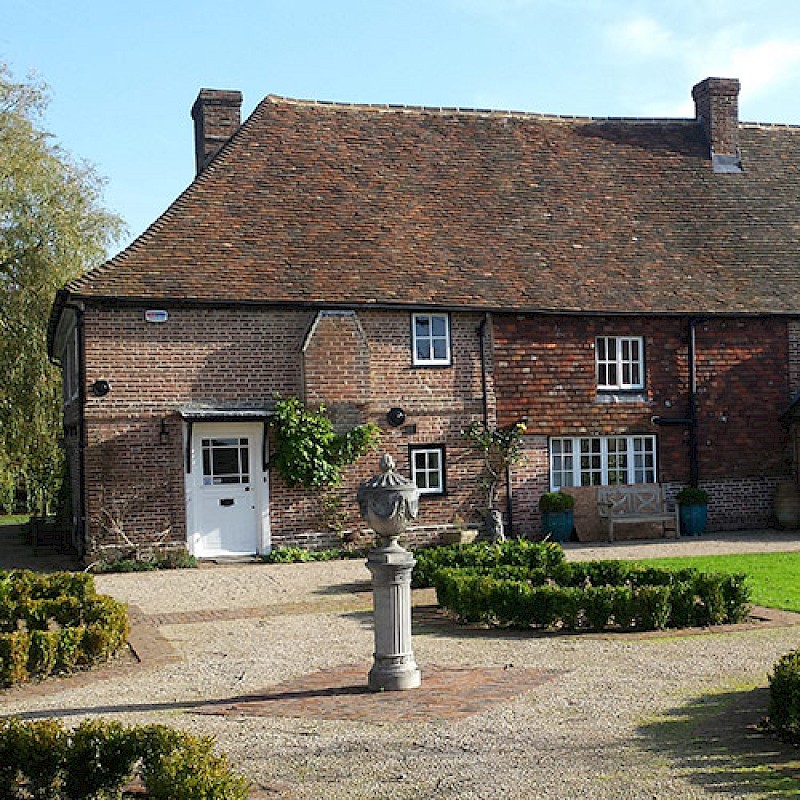
Visit our gallery to see examples of our heritage roofing projects.
History of Kent Peg Tiles
Clay tiles, supposedly introduced to England during Roman times, saw a resurgence in popularity during the 12th and 13th centuries. This is arguably due to their fire safety advantage over thatch. Peg Tiles earned their name from the unique method of securing them to the roof, where wooden pegs were driven through holes in the tiles to hang them in place.
Kent Peg Tiles: A Regionally Unique Identity
'Kent Peg Tiles' distinguish themselves further due to regional variations. Historically, every town or village had its own brickmaker, and it would have been unusual to transport these tiles further afield apart from church roofing or homes of the wealthy. Additionally, brickmakers crafted tiles from locally sourced clay, leading to regions have distinct tiles. Consequently, tiles from different regions could exhibit variations in colour, texture, and shape. Kent peg tiles are renowned for their warm orange tone, but even this shade can have variations too. Several factors influenced these variations:
- Mixture of materials - The composition of the clay and materials used.
- Kiln Firing Duration - The length of time the tiles spent in the kiln.
- Kiln Temperature - The temperature at which the tiles were fired.
- Skill of the Tile Maker - The expertise and craftsmanship.
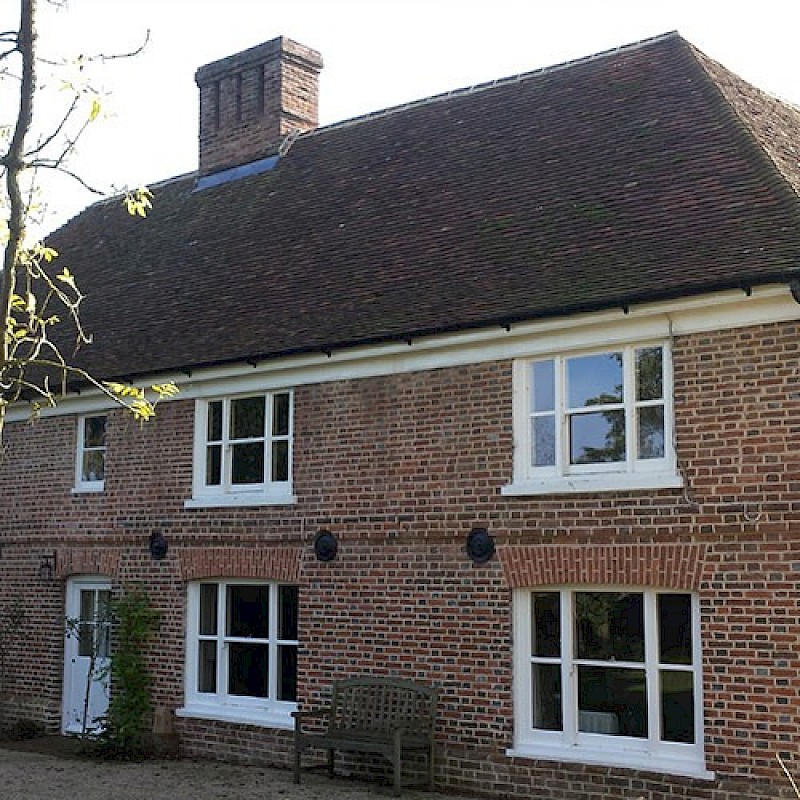
Distinctive characteristics of Kent Peg Tiles
One of the defining features of Kent Peg Tiles is their distinctive size. In 1477, King Edward IV issued the 'Charter of Standardisation', an attempt to establish uniformity in tile sizes across the country. According to this decree, tiles were to measure 10 1/2 inches by 6 1/4 inches. However, certain regions, including Kent, chose to disregard this mandate, resulting in the recognisable differences in tile appearance. In fact, Kent Peg Tiles can range between 9 to 10 inches, and 6 inches, notably smaller than the intended 'standard' tile.
Originally, Kent Peg Tiles featured rectangular holes to accommodate for wooden pegs for roof attachment. Over time, circular holes have become more common, and the type of wood used has also varied. Historically, these pegs were crafted with softwood, but references to hazel, willow, elder and oak pegs can be found in the early 20th century. In more recent times, there has been a shift towards aluminium pegs, also referred to as 'drops' for tile attachment. It is important to consider the material of your fasteners, as contact with lime and other materials can lead to corrosion.
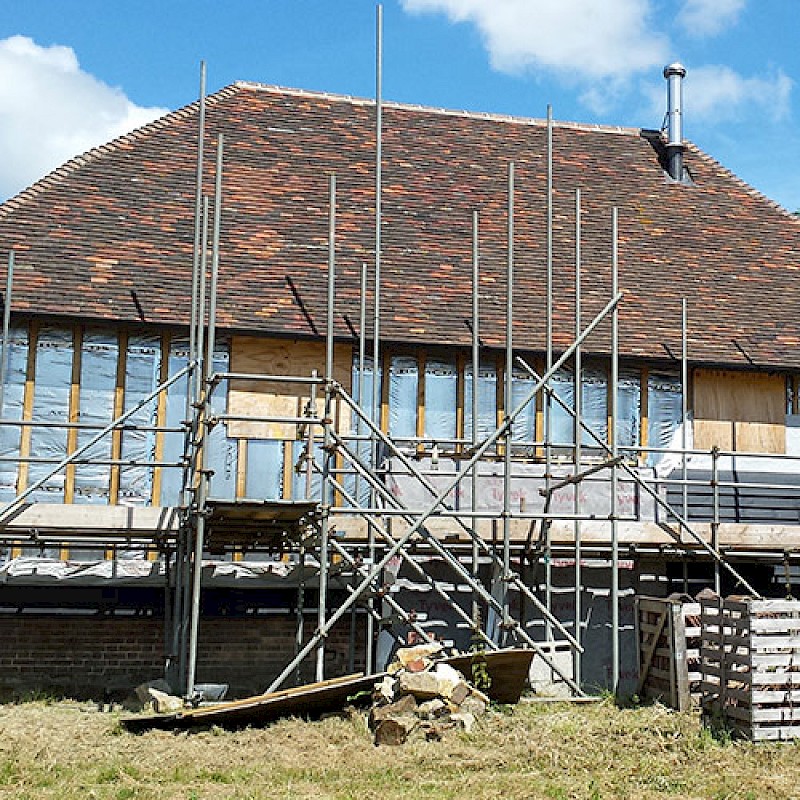
Preserving Tradition: Kent Peg Tile Conservation
By the mid-nineteenth century, tiles evolved to include nibs on the underside of the top edge, allowing them to hook onto the timber battens. This innovation marked a departure from traditional peg tiles towards modern roofing styles.
In the heart of South England's historical architecture, Kent Peg Tiles have stood the test of time, embodying centuries of craftsmanship and character. The introduction of nibs may have signaled a shift towards modern roofing, but due to their historical and aesthetic significance, many homeowners have chosen to preserve and repair their Kent Peg Tile roofs instead of transitioning to modern roof tiles.
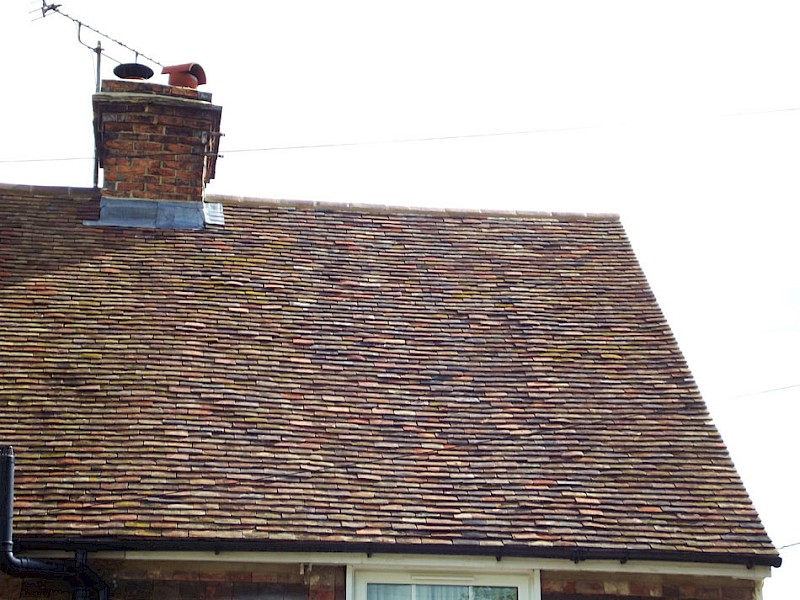
Listed buildings and Conservation Areas: A Special Responsibility
For homeowners fortunate enough to reside in listed buildings or conservation areas, preserving the essence of these architectural treasures is more than a choice - it's a responsibility.
Why Choose SWM Roofing for Your Kent Peg Tile Roof
When it comes to safeguarding the legacy of your Kent Peg Tile roof, choosing the right partner is paramount. As SWM Roofing, we specialise in the art of Kent Peg Tile preservation and resotration. Our commitment to preserving the past while ensuring the longevity of your roof is unwavering.
Throughout every restoration project, we ensure compliance for listed and period properties. We can guarantee that we will meet all standards and specifications.
History in Every Tile, Care in Every Touch: With SWM Roofing, your Kent Peg Tile roof is not just a roof—it's a piece of history we honor with every repair and maintenance touch. Request your consultation today.
